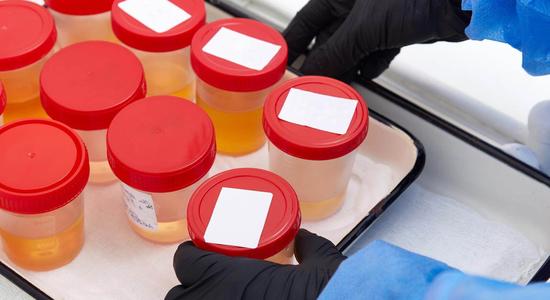See all "Candida glabrata" Section Topics

Candida glabrata (C. glabrata), as you may already know, is one of the rarer species of Candida that actually affect the body. In the past, this fungus was thought to be not harmful; however, with the advent of greater immune weaknesses, this fungus has clearly been seen to be pathogenic. One of the common drugs used to treat C. glabrata, is fluconazole. Yet, some women and men find that fluconazole doesn’t seem to rid them of their C. glabrata infection at all. This could potentially be due to a fluconazole resistant strain of C. glabrata. Next is an explanation of what fluconazole is; following are various studies where C. glabrata yeast was shown to be resistant to fluconazole drugs.
What is Fluconazole Yeast Infection Treatment?
The first thing to know about fluconazole is it is an “azole” antifungal drug. Azoles are themselves a type of molecule. The ones we are interested in, are used to kill yeast. Antifungal azoles are classified into two different groups: triazoles and imidazoles. These drugs have an ability to kill a wide variety of fungi; and, are therefore known as broad-spectrum antifungals.
Azole antifungals all essentially work the same way. They hinder certain cellular functions in the yeast, which causes yeast cells to be unable to maintain their cell wall. Once the cell wall becomes too weak, the yeast simply dies.
Fluconazole is in the class of triazoles (again this classification is due to certain molecular properties), and is often used when treating systemic yeast infections; as it is more predictable in its absorption rate, and is generally safer than other imidazole drugs. Because fluconazole can kill yeast so well, and it is one of the safest of the triazole drugs, it has been used extensively.
It is likely that the extensive use of fluconazole has been the predominant reason why there is so much wide spread resistance in fungi like C. glabrata.
A 1/2 Day & Yeast is Gone!
Linda Allen suffered from yeast infections for years. Through researching natural medicine & Candida, she found an efficacious solution!
Linda is one expert you want on your side! Let her show you how to get rid of a superficial yeast infection in just 12 hours; AND, keep it gone!
A 60-day, 100% money back guarantee is provided.
Visit Official Site!Side Effects of Fluconazole Drugs

The brand name of a fluconazole yeast infection treatment, which is widely known among sufferers from this problem, is Diflucan. Diflucan is, in itself, just fluconazole. There are severe side effects, that should be dealt with by a doctor, and other mild side effects to this drug. These side effects are an excellent reason to use natural, safer treatments for C. glabrata problems.
Mild Side Effects
- Throwing up
- General nausea
- General stomach pains
- Headaches
- Feelings of vertigo
- Loose stools / diarrhea
- Food and drink taste different
Severe Side Effects
- Severe birth defects and infant mortality (when taken while pregnant)
- Severe allergic reactions can occur resulting in breathing problems, irritated skin, swelling of areas in the mouth, etc.
- Fever
- Seizures
- Severe stomach problems such as intense nausea and diarrhea
- Muscle Cramping
- Irregular Heartbeat
- and many other problems…
If you are pregnant you should definitely not take fluconazole. There was a study, that described the cases of three pregnant women, who used fluconazole through, or beyond, the first trimester of pregnancy. The study was published in Clinical Infectious Diseases [Volume 22, Issue 2 p. 336-340]. The research describes what happened to these three babies. All of the babies of these women suffered from congenital anomalies; i.e., birth defects. Of the three babies, two children died. There was no other drug or substance taken by these women which the researchers thought could have such an effect on the babies; the primary culprit was fluconazole in all three pregnant women.
Eliminate Bacterial Vaginosis & Vaginal Odor
Jennifer O’Brien is one prominent expert on BV that knows how to get rid of vaginal odor. BV is a common infection that you don’t have to put up with.
Jennifer will show you how to naturally eliminate vaginal odor in just 3 days.
A 60-day, 100% money back guarantee is provided.
Visit Official Site!Fluconazole Resistant Candida glabrata

In addition to being dangerous, fluconazole can also fail to kill certain strains of C. glabrata that are resistant to this drug. Resistant microbes lack genetic material that the regular versions do not. Allegorically, consider a yeast cell to be a house. This house is assaulted by azole drugs based on, a feature of the house: the back door. Normal yeast cells have the correct genetic material for a working back door. Resistant strains are abnormal, and lack the genetic material to properly construct a back door. Therefore, a resistant yeast cell "house" has a back door that can never be opened; and, the house (yeast cell) is weaker as a result. The unusual outcome, however, is that when a drug tries to enter the back door, it won't be able to get through. With this allegorical, tangential discussion aside, here are some studies documenting the resistant strains.
One study, is certainly of interest, as it makes it probable that C. glabrata in your system could turn into a fluconazole resistant strain via continued use of this drug. Through drug use, regular C. glabrata can become wiped out, leaving resistant versions only. If this is the case, when you kill off the susceptible C. glabrata, the resistant strains could start overgrowing; eventually becoming predominant in your body.
The study was published in Antimicrobial Agents and Chemotherapy [February 2005 vol. 49 no. 2 p. 783-787], and details how fluconazole susceptible C. glabrata became resistant in just 4 days. The study found that C. glabrata, exposed to fluconazole for four days, rapidly developed resistance to three azole antifungals: fluconazole, itraconazole, and voriconazole. The strains of Candida glabrata were taken and isolated in the years 1917, 1935, 1960, 1973, and 1975. This is before fluconazole became approved and widely used. These strains are therefore very typical of the type of Candida glabrata that is attacking your body.
If you have been taking fluconazole for C. glabrata for an extended period of time, it is possible that C. glabrata that was genetically predisposed to resist fluconazole, has overgrown and is now infecting your body. Consequently, you will fail to see results from perhaps many different azole antifungal drugs as a result. Remember, two other azoles were also not able to stop Candida glabrata that had been exposed to fluconazole; and, transitioned to a resistant pathogen. All it took was 2 to 4 days for this yeast to become resistant to these conventional prescription drugs.
Clair Goodall: Author & Nature Lover
Clair Goodall is a bee-obsessed natural medicine convert from Minnesota. She is one expert you might want to know more about!
Clair will help you protect you and your family from toxic products and chemicals and help you discover solutions from nature.
Also, Clair’s book is backed by a 60-day, 100% money back guarantee
Visit Official Site!Conclusion
In conclusion, the risks of side effects, and the possibility for C. glabrata to become resistant to Diflucan and other prescription drugs, makes it less desirable. It would probably be prudent to rely on a safer, more effective, natural remedy to treat C. glabrata. You won’t have to worry about the side effects of a powerful drug; and, you can be sure your yeast infection will be cured.
If you want to learn more about natural treatments for Candida, you can check out the homepage of this site for all the categories of information on this topic. You should be able to get a plethora of sources to back up the information on this site; and, learn powerful ways to naturally get rid of Candida glabrata, albicans, or other types that are ruining your life.
Author: Mr. Nicholas Gross

Nick Gross is a natural medicine enthusiast who has been researching and writing about natural medicine since 2008. Nick is primarily a web developer but also researches and authors written and video content about natural health. Nick has a bachelor’s degree in Management Information Systems from the University of Northern Iowa.
Disclaimer
The information on this website is not a prescription for anyone. This information is for informational or educational purposes only, and is not a substitute for professional medical advice or consultations with healthcare professionals.
Affiliate Disclosure
Some of the links provided on this website are affiliate links. When a purchase is made through these links, Candida Hub earns money from commission. This helps to keep the website up and helpful to people for free. Thank you for any support!
Stay Up to Date
If you enjoyed this article, consider following / liking our Facebook page. This page is primarily utilized to alert followers of new articles that are put on Candida Hub. Candida related news is also discussed. While you are there, you can see what has been more recently added to Candida Hub.
SOURCES:
- http://www.ncbi.nlm.nih.gov/pmc/articles/PMC88922/ — (How fluconazole works to kill Candida glabrata yeast and the popularity of fluconazole use) — Antifungal Agents: Mode of Action, Mechanisms of Resistance, and Correlation of These Mechanisms with Bacterial Resistance. Clinical Microbiology Reviews. v.12(4); 1999 Oct.
- http://cid.oxfordjournals.org/content/22/2/336.short — 3 babies suffer immensly from fluconazole antifungal drugs — Fluconazole-Induced Congenital Anomalies in Three Infants. Clinical Infectious Diseases (Volume 22, Issue 2 p. 336-340)
- https://dx.doi.org/10.1128/AAC.49.2.783-787.2005 — Rapid Acquisition of Stable Azole Resistance by Candida glabrata Isolates Obtained before the Clinical Introduction of Fluconazole. Antimicrobial Agents and Chemotherapy (February 2005 vol. 49 no. 2 p. 783-787)








